Jean-Louis Dessalles
INFRES, LTCI
Three Conjectures on Unexpectedeness
Nov 15, 2023Abstract:Unexpectedness is a central concept in Simplicity Theory, a theory of cognition relating various inferential processes to the computation of Kolmogorov complexities, rather than probabilities. Its predictive power has been confirmed by several experiments with human subjects, yet its theoretical basis remains largely unexplored: why does it work? This paper lays the groundwork for three theoretical conjectures. First, unexpectedness can be seen as a generalization of Bayes' rule. Second, the frequentist core of unexpectedness can be connected to the function of tracking ergodic properties of the world. Third, unexpectedness can be seen as constituent of various measures of divergence between the entropy of the world (environment) and the variety of the observer (system). The resulting framework hints to research directions that go beyond the division between probabilistic and logical approaches, potentially bringing new insights into the extraction of causal relations, and into the role of descriptive mechanisms in learning.
From Probabilistic Programming to Complexity-based Programming
Jul 28, 2023Abstract:The paper presents the main characteristics and a preliminary implementation of a novel computational framework named CompLog. Inspired by probabilistic programming systems like ProbLog, CompLog builds upon the inferential mechanisms proposed by Simplicity Theory, relying on the computation of two Kolmogorov complexities (here implemented as min-path searches via ASP programs) rather than probabilistic inference. The proposed system enables users to compute ex-post and ex-ante measures of unexpectedness of a certain situation, mapping respectively to posterior and prior subjective probabilities. The computation is based on the specification of world and mental models by means of causal and descriptive relations between predicates weighted by complexity. The paper illustrates a few examples of application: generating relevant descriptions, and providing alternative approaches to disjunction and to negation.
To do or not to do: finding causal relations in smart homes
May 20, 2021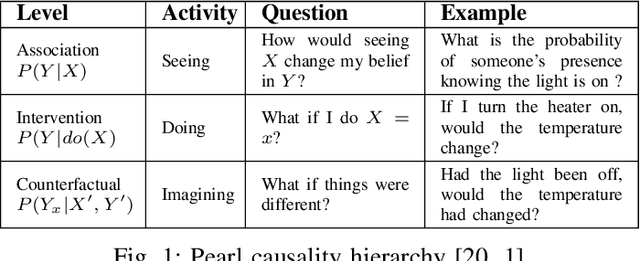

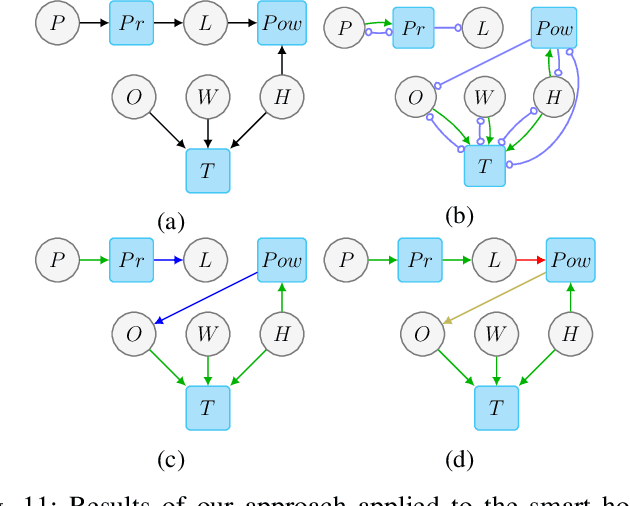
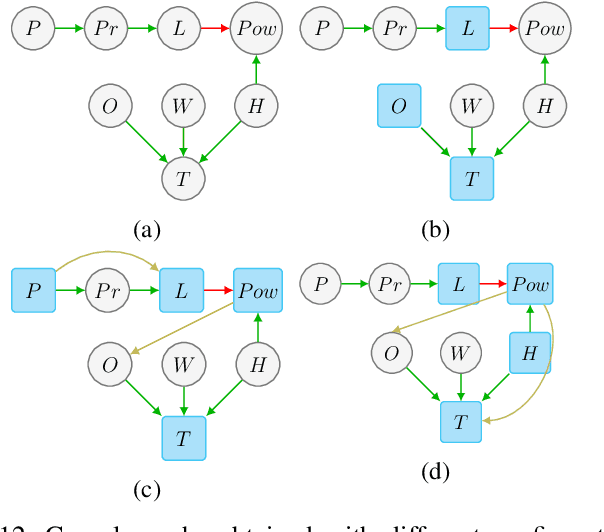
Abstract:Research in Cognitive Science suggests that humans understand and represent knowledge of the world through causal relationships. In addition to observations, they can rely on experimenting and counterfactual reasoning -- i.e. referring to an alternative course of events -- to identify causal relations and explain atypical situations. Different instances of control systems, such as smart homes, would benefit from having a similar causal model, as it would help the user understand the logic of the system and better react when needed. However, while data-driven methods achieve high levels of correlation detection, they mainly fall short of finding causal relations, notably being limited to observations only. Notably, they struggle to identify the cause from the effect when detecting a correlation between two variables. This paper introduces a new way to learn causal models from a mixture of experiments on the environment and observational data. The core of our method is the use of selected interventions, especially our learning takes into account the variables where it is impossible to intervene, unlike other approaches. The causal model we obtain is then used to generate Causal Bayesian Networks, which can be later used to perform diagnostic and predictive inference. We use our method on a smart home simulation, a use case where knowing causal relations pave the way towards explainable systems. Our algorithm succeeds in generating a Causal Bayesian Network close to the simulation's ground truth causal interactions, showing encouraging prospects for application in real-life systems.
REMI: Mining Intuitive Referring Expressions on Knowledge Bases
Nov 04, 2019



Abstract:A referring expression (RE) is a description that identifies a set of instances unambiguously. Mining REs from data finds applications in natural language generation, algorithmic journalism, and data maintenance. Since there may exist multiple REs for a given set of entities, it is common to focus on the most intuitive ones, i.e., the most concise and informative. In this paper we present REMI, a system that can mine intuitive REs on large RDF knowledge bases. Our experimental evaluation shows that REMI finds REs deemed intuitive by users. Moreover we show that REMI is several orders of magnitude faster than an approach based on inductive logic programming.
Role of Simplicity in Creative Behaviour: The Case of the Poietic Generator
Dec 22, 2016


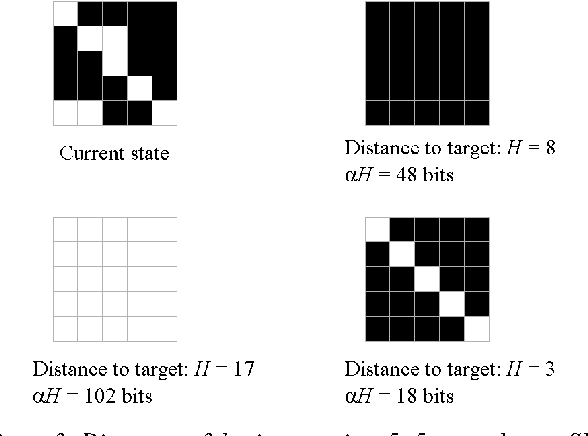
Abstract:We propose to apply Simplicity Theory (ST) to model interest in creative situations. ST has been designed to describe and predict interest in communication. Here we use ST to derive a decision rule that we apply to a simplified version of a creative game, the Poietic Generator. The decision rule produces what can be regarded as an elementary form of creativity. This study is meant as a proof of principle. It suggests that some creative actions may be motivated by the search for unexpected simplicity.
* This study was supported by grants from the programme Futur&Ruptures and from the 'Chaire Modelisation des Imaginaires, Innovation et Creation', http://www.computationalcreativity.net/iccc2016/posters-and-demos/
Algorithmic Simplicity and Relevance
Aug 09, 2012


Abstract:The human mind is known to be sensitive to complexity. For instance, the visual system reconstructs hidden parts of objects following a principle of maximum simplicity. We suggest here that higher cognitive processes, such as the selection of relevant situations, are sensitive to variations of complexity. Situations are relevant to human beings when they appear simpler to describe than to generate. This definition offers a predictive (i.e. falsifiable) model for the selection of situations worth reporting (interestingness) and for what individuals consider an appropriate move in conversation.
Providing information can be a stable non-cooperative evolutionary strategy
Aug 27, 2011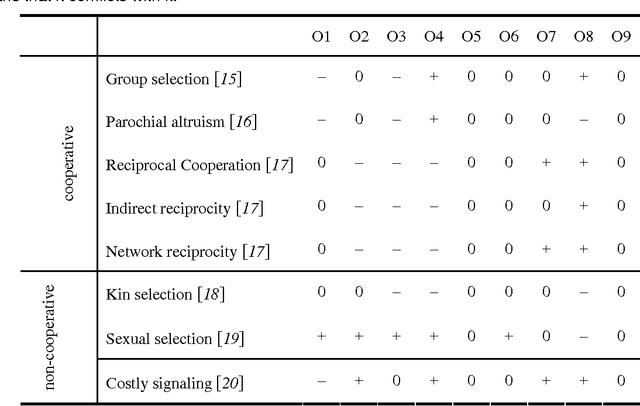
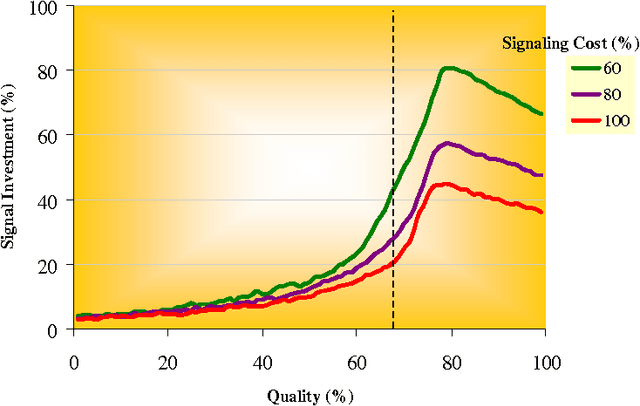
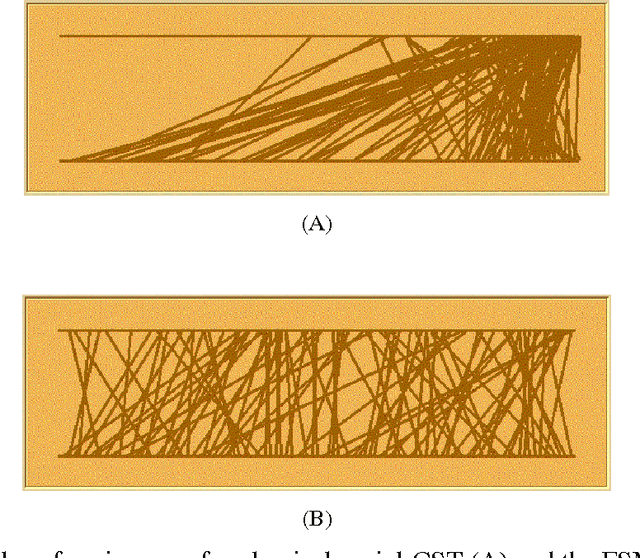
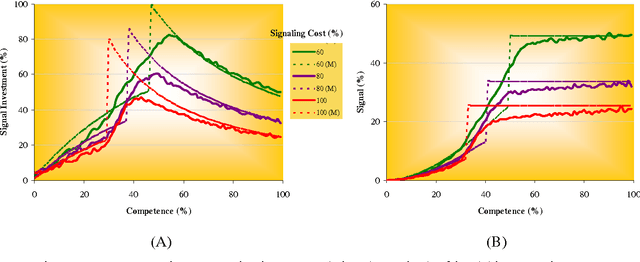
Abstract:Human language is still an embarrassment for evolutionary theory, as the speaker's benefit remains unclear. The willingness to communicate information is shown here to be an evolutionary stable strategy (ESS), even if acquiring original information from the environment involves significant cost and communicating it provides no material benefit to addressees. In this study, communication is used to advertise the emitter's ability to obtain novel information. We found that communication strategies can take two forms, competitive and uniform, that these two strategies are stable and that they necessarily coexist.
Why is language well-designed for communication? (Commentary on Christiansen and Chater: 'Language as shaped by the brain')
Aug 22, 2011Abstract:Selection through iterated learning explains no more than other non-functional accounts, such as universal grammar, why language is so well-designed for communicative efficiency. It does not predict several distinctive features of language like central embedding, large lexicons or the lack of iconicity, that seem to serve communication purposes at the expense of learnability.
* jld-08041101
Detection and emergence
Aug 22, 2011Abstract:Two different conceptions of emergence are reconciled as two instances of the phenomenon of detection. In the process of comparing these two conceptions, we find that the notions of complexity and detection allow us to form a unified definition of emergence that clearly delineates the role of the observer.
* jld-98072401
Biomimetic use of genetic algorithms
Aug 21, 2011

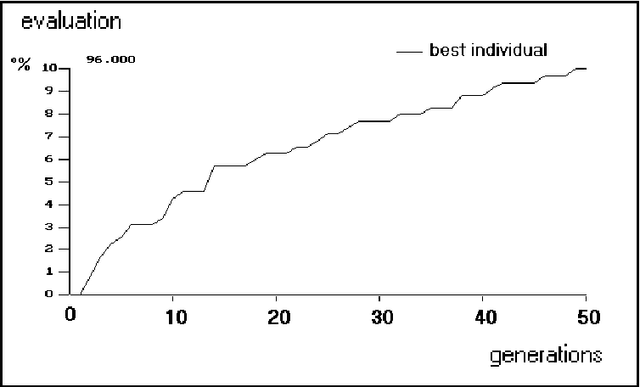

Abstract:Genetic algorithms are considered as an original way to solve problems, probably because of their generality and of their "blind" nature. But GAs are also unusual since the features of many implementations (among all that could be thought of) are principally led by the biological metaphor, while efficiency measurements intervene only afterwards. We propose here to examine the relevance of these biomimetic aspects, by pointing out some fundamental similarities and divergences between GAs and the genome of living beings shaped by natural selection. One of the main differences comes from the fact that GAs rely principally on the so-called implicit parallelism, while giving to the mutation/selection mechanism the second role. Such differences could suggest new ways of employing GAs on complex problems, using complex codings and starting from nearly homogeneous populations.
 Add to Chrome
Add to Chrome Add to Firefox
Add to Firefox Add to Edge
Add to Edge